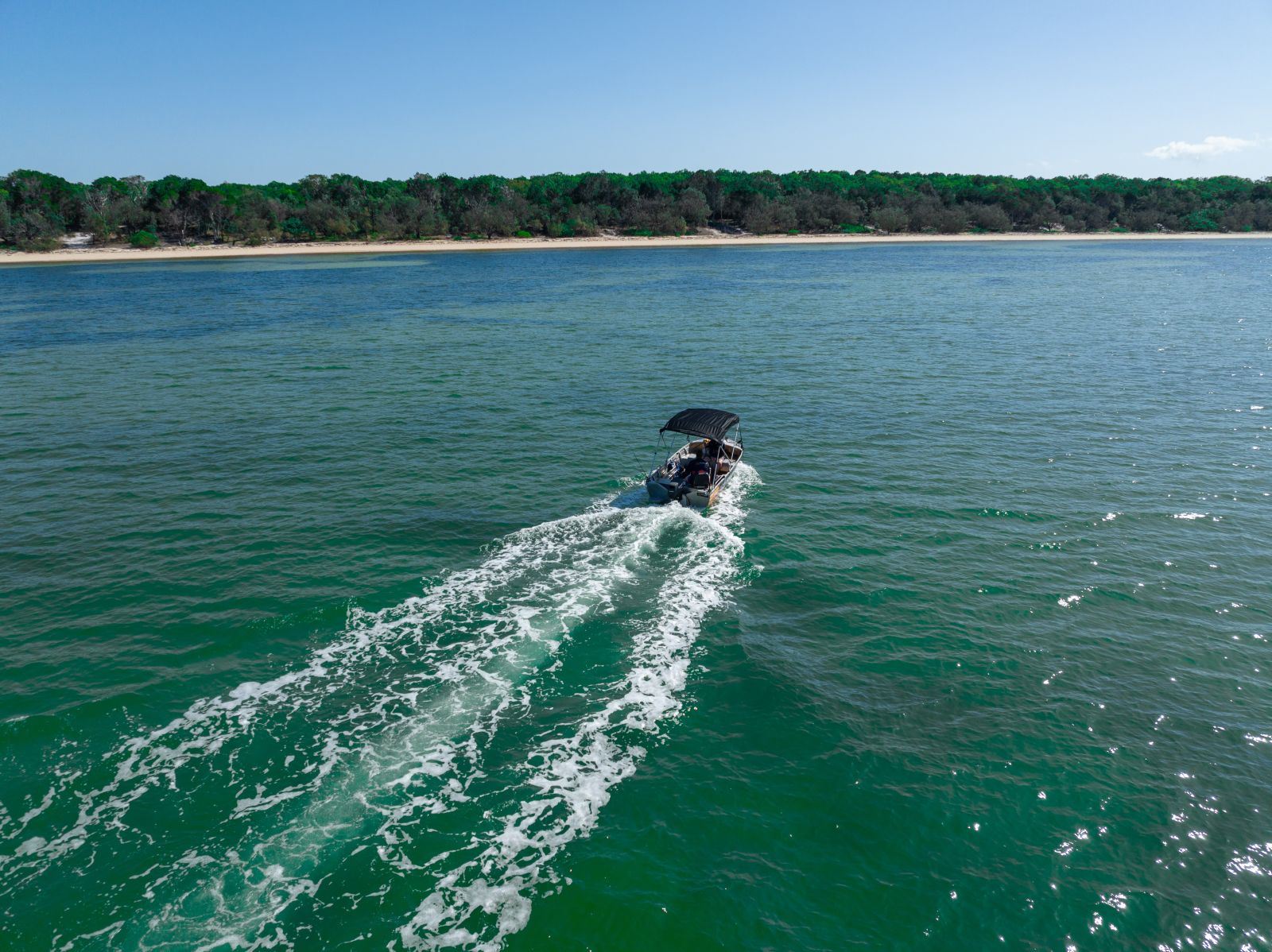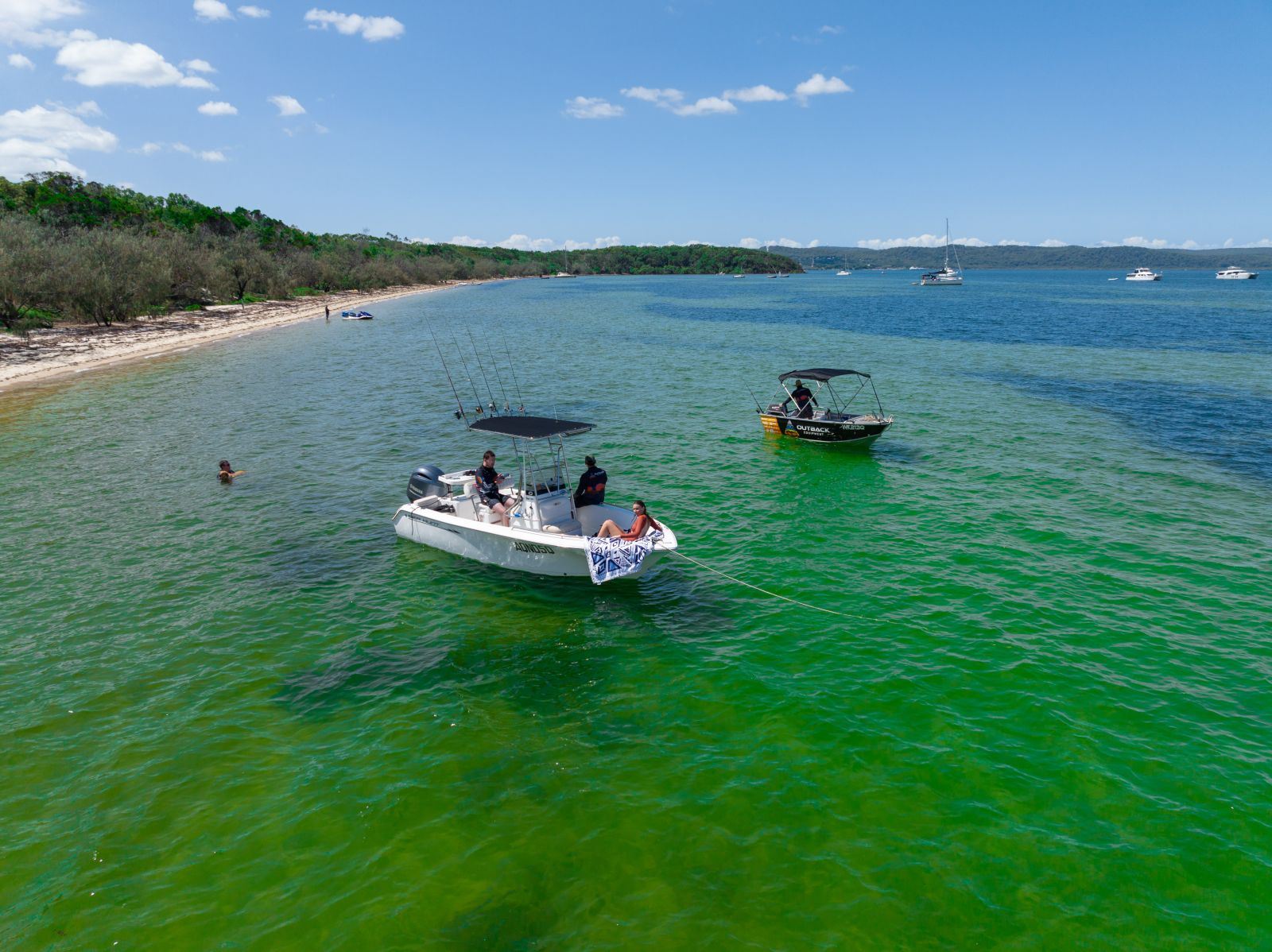
An anchor system can include up to six components:
- The boat is solidly anchored in the bow.
- It is attached to a cleat or a bollard.
- The rope that attaches the cleat to the chain.
- The anchor chain for the boat.
- The boat anchor.
Many of these components can be swapped out at any moment to help in handling different situations or if the accessories need to be replaced due to wear and tear. Not only will choosing the best items help you to loosen and pull up your boat anchor in a more convenient and faster manner, but it is also needed by law to have an anchor that is suitable for the size of your vessel.
What size anchor for your boat?
Similarly to the length of the boat, the size of your watercraft, i.e. Tinny, Jetski, Kayak, will determine how much chain is necessary to be tied to the anchor itself. This aids in providing a secure grip for the boat by allowing the boat anchor to rest on the ocean's bottom.

Boat Anchor Weight in Kilograms Boat Length in Feet and Meters:
|
10 |
For boats 23 to 35 feet or 7 to 11 metres in length |
|
15 |
For boats 28 to 39 feet or 8.5 to 12 metres in length |
|
20 |
For boats 35 to 45 feet or 11 to 14 metres in length |
|
25 |
For boats 38 to 50 feet or 11.5 to 15.5 metres in length |
What type of anchor are you looking for?
The weight and length of your leisure watercraft must be considered while selecting a boat anchor. Typically, a boat anchor manufacturer will identify the various sizes of boat anchors using pounds. When buying a boat anchor, you'll discover that the majority of them are weighed in pounds. By splitting pounds in half, you may easily convert pounds to kilogrammes using the chart above. In other words, 10 pound equals 5 kilogrammes. When picking an anchor, keep in mind the length of your boat, the weight of your boat, and the weather conditions in your location.
THUMB RULE: 1 pound of anchor every foot or 1.5 kg per metre (rounding up to the nearest size).
Selecting an anchor in the highest weight/length category for your boat is always recommended by Whitsunday Discount Marine. This will give you piece of mind if the weather turns bad and you need to stay the night. The anchor type is determined by the type of bottom and personal taste.
Connecting folding grapnel anchors to anchoring rope with at least 1 metre of chain is ideal as a backup anchor or in an emergency
RIBs, inflatables, and jetskis are all available. Reef anchors are great for coral reefs and sandy bottoms, and they're easy to get out of small boats. For maximum hold, use at least 1 metre of chain for every metre of boat length.
Due to their triangular shaped flukes that bury into the sand, sand anchors are suitable for sandy bottoms or anchoring on a beach. For maximum hold, use at least 1 metre of chain for every metre of boat length. Most bottoms, especially mud and sand, are straightforward to use with a Claw anchor. They are self-aligning and roll upright at all times. With low rode optics, they function admirably. For maximum hold, use at least 1 metre of chain for every metre of boat length.
Articulated shank plough anchors have a ballasted tip and a shank profile. Like a plough, they may drag and till the seabed. The fixed head plough has taken their place. They work well with sand, weeds, and dirt. For maximum hold, use at least 1 metre of chain for every metre of boat length. Fixed head plough anchors with a shank profile and ballasted tip allow for self-launching and immediate set. Sand, rock, weed, muck, and coral are all acceptable and suggested. For maximum hold, use at least 1 metre of chain for every metre of boat length. Spade with roll bar anchors is the world's best-holding, fastest-setting fixed shank anchor. The anchor can be utilised effectively on any type of seabed. For maximum hold, use at least 1 metre of chain for every metre of boat length.


.png)
Leave a comment